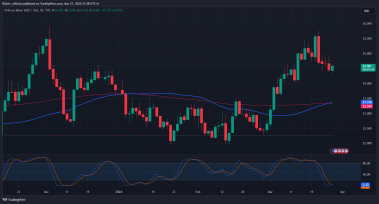While U.S. inflation increased faster than anticipated last month, crude oil prices plummeted on Tuesday as the Biden administration announced greater petroleum sales from the country’s Strategic Petroleum Reserve.
The price of U.S. crude futures declined 1.6% to $78.90 per barrel, while the price of the Brent contract dropped 1.2% to $85.57 per barrel.
Consumer price growth in the United States slowed in January, dropping from 6.5% in December to 6.4% annually, according to data released earlier on Tuesday.
The closely watched year-over-year core statistic, which excludes volatile commodities like energy and food, came in at 5.6%, down from 5.7% in the prior month but still higher than experts’ expectations of 5.5% growth. Nevertheless, this gain was still above the predicted 6.2% growth.
This inflation data reveals that inflation is continuing to be difficult to control even after the Federal Reserve permitted several interest rate increases to do so. As a result, these rises might have a higher end point, pushing the U.S. economy, the world’s top consumer of crude, into a recession this year.
The U.S. government said late Monday that it will sell an additional 26 million barrels of petroleum from the SPR as part of a release required by Congress, which put the crude oil market on edge as the day went on.
This sale comes after the Department of Energy released a record 180M barrels from the reserve last year to combat rising fuel prices.
After significant emergency releases the previous year, there had been rumours that the U.S. administration might postpone or perhaps cancel this release, according to experts at ING. These have reduced SPR stocks to little about 372MMbbls, which is the lowest level since 1983.
The Organization of Petroleum Exporting Countries reduced its supply forecast for this year in its most recent monthly report, but it also increased its demand estimate, leading to its forecasts of a little tighter global crude oil market.
Russia has already announced a reduction in the production of 500,000 barrels per day beginning in March, and OPEC members don’t appear likely to increase production to make up for Moscow’s announced reductions.
“Key to oil demand growth in 2023 will be the return of China from its mandated mobility restrictions,” OPEC said.
Later in the day, the American Petroleum Institute is scheduled to reveal its assessment of the country’s oil stockpiles.
Reading More:




 By:
By:





